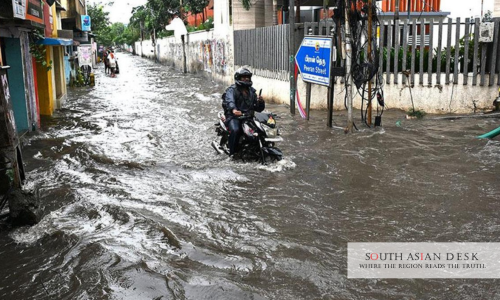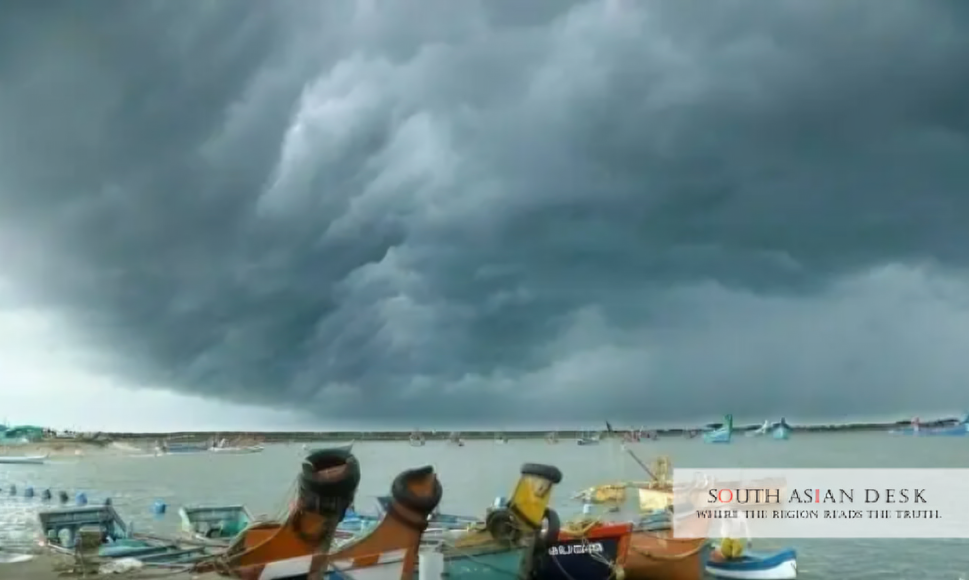Chennai, August 25, 2025 – The Greater Chennai Corporation unveiled flood prone areas in Chennai as part of its City Disaster Management Perspective Plan on Monday, targeting 87 spots based on 2024 monsoon data. Officials utilized GIS mapping to categorize risks into high, medium, and low categories. This initiative builds on past reductions in flood points to bolster urban resilience.
Flood Vulnerabilities Threaten South Asian Megacities
Chennai flood-prone areas spotlight a pressing challenge for South Asia’s coastal hubs. With climate change intensifying monsoons, cities like Mumbai and Dhaka face similar threats, displacing millions and incurring $10 billion in damages annually across the region. Tamil Nadu’s efforts influence neighbouring Andhra Pradesh and Kerala, where shared river basins amplify risks. Enhanced plans like this foster cross-border strategies, safeguarding 500 million urban dwellers from economic shocks and health crises tied to waterlogging.
Chennai Disaster Management Plan Targets Key Vulnerabilities
The Chennai disaster management plan outlines proactive steps for natural disasters. It designates the corporation’s control room as the nodal centre for coordination. Teams handle response, relief, and rehabilitation duties.
Data from the 2024 northeast monsoon informed the mapping. Officials monitored stormwater drains digitally and coordinated in real-time via the Emergency Operations Centre. This approach cut flood locations from 561 in 2021 to 35 in 2023.
The plan addresses cyclones, tsunamis, and floods. It incorporates geographical and demographic factors to prioritise zones. Public communication forms a core pillar, with awareness campaigns reaching residents. Restoration of waterbodies and desilting of canals are key features. GCC strengthens pumping stations to handle peak inflows. Inter-departmental ties ensure swift action during alerts.
87 Flood Prone Areas in Chennai Span Risk Levels
The GCC identified 87 flood-prone spots in Chennai, which are categorized into three tiers. Twenty-six areas are classified as high vulnerability, requiring immediate intervention. Twenty-seven qualify as medium, while 34 rate low but require monitoring.
These spots stem from urban encroachments and drainage gaps. Past monsoons submerged low-lying wards, disrupting power and transport. The plan deploys GIS tools for precise demarcation. High-risk zones include coastal stretches prone to storm surges. Medium areas suffer from inadequate canal capacities. Low-vulnerability sites still face overflow during extreme rains.
Officials plan to issue early warnings via the TN-Alert system. This SMS network notifies 2 million users in real time. Evacuation drills target these 87 flood spots Chennai to minimise casualties.
Monsoon Flood Risks Chennai Prompt Swift Measures
Monsoon flood risks in Chennai escalate with rising sea levels and erratic patterns. The 2024 season recorded 1,200 mm of rainfall, overwhelming existing infrastructure. GCC’s plan counters this through integrated urban flood management. Digital monitoring tracks drain blockages hourly. Pumps activate at 50 mm of hourly precipitation. Relief teams preposition sandbags and boats at high-risk points.
Coordination with state agencies encompasses broader basins, such as the Kosasthalaiyar. This prevents upstream overflows from hitting flood-prone areas.
Public involvement grows via AAPDA Mitra volunteers. These 5,000 citizens train as first responders. They aid in mapping and alerting neighbours during downpours. The plan aligns with national guidelines under the Disaster Management Act. It emphasises rehabilitation, offering temporary shelters for 10,000 displaced families.
Background: From Deluge to Defence
Chennai’s flood history dates back to the 2005 and 2015 events, which claimed 500 lives and resulted in INR 15,000 crore in losses. Encroached wetlands had halved the natural sponge population by 2020.
GCC launched GIS surveys post-2015. These evolved into the 2025 perspective plan. State support via TNSDMA integrates local data with regional forecasts. Urban growth adds pressure, with the population hitting 12 million. Slum clusters in flood-prone areas of Chennai amplify human tolls.
What’s Next: Implementation and Monitoring
Authorities schedule quarterly reviews for the Chennai disaster management plan. Budget allocations reach INR 500 crore for drain upgrades. Monsoon flood risks in Chennai will be tested in October. The Chennai flood-prone areas guide focused investments. Success hinges on community buy-in and tech upgrades to avert repeats of past chaos.
Published in SouthAsianDesk, October 25th, 2025
Follow SouthAsianDesk on X, Instagram, and Facebook for insights on business and current affairs from across South Asia.






